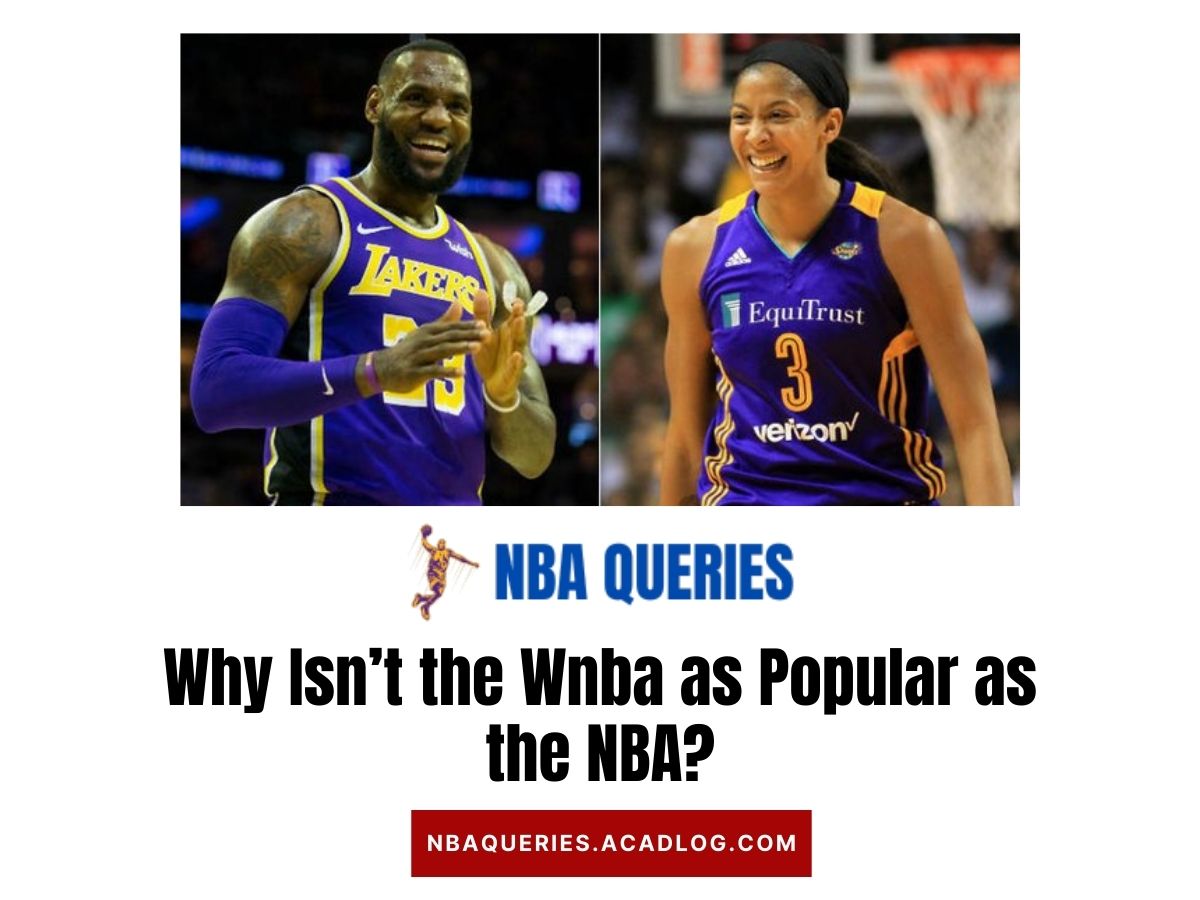The Women’s National Basketball Association (WNBA) has been in existence for over two decades, yet it remains overshadowed by its male counterpart, the National Basketball Association (NBA). Despite the talent, dedication, and hard work of WNBA players, the league struggles to gain the same level of popularity. In this article, we will look into the reasons behind this disparity and explore potential solutions.
Reasons Why WNBA is Not as Popular as the NBA
1. Historical Context and Timing
The NBA was established in 1949, giving it a significant head start over the WNBA, which was founded in 1996. The NBA has had more time to attract talent, build a fan base, and establish itself as a global sports phenomenon. Comparing the two leagues directly in terms of profit or viewership overlooks this critical difference in their histories.
2. Target Audience and Marketing
The NBA and WNBA cater to different consumer bases. While the NBA appeals to a broad demographic, the WNBA specifically aims to inspire young girls. However, achieving this goal has proven challenging. As Washington Mystics forward Elena Delle Donne aptly put it, “You can’t follow something that you haven’t seen.” The lack of visibility and investment in WNBA advertising has hindered its growth.
In 2018, NBA Commissioner Adam Silver acknowledged the WNBA’s marketing problem and emphasized the need to connect with young people. Since then, the league has made strides, including allocating $1.6 million for marketing agreements. However, sustained efforts are necessary to engage new viewers and create lasting impressions.
3. Pay Disparity and Revenue Challenges
The pay disparity between WNBA and NBA players is stark. WNBA players receive approximately 22% of the league’s revenue, while NBA players enjoy a 50% share. However, the root cause lies in revenue generation. The WNBA has yet to turn a profit in any single season since its inception. Without substantial revenue, it’s challenging to offer competitive salaries.
4. Skill Sets and Perception
WNBA players possess exceptional basketball skills, but their style of play differs from the NBA. The WNBA emphasizes fundamentals, teamwork, and strategy. While some fans appreciate this approach, others seek the high-flying dunks and flashy plays associated with the NBA. The perception that women’s basketball is less exciting or entertaining affects its popularity.
5. Media Coverage and Visual Demand
Media coverage plays a crucial role in shaping public perception. Unfortunately, the WNBA receives significantly less coverage than the NBA. Highlight reels, player profiles, and game analysis are essential for building interest. Additionally, the visual demand for women’s professional basketball remains lower, impacting viewership.
6. Cultural Biases and Stereotypes
Stereotypes and gender biases persist, affecting the WNBA’s standing. Some perceive women’s basketball as less competitive or intense, perpetuating the notion that it lacks the excitement of men’s basketball. Challenging these biases requires consistent efforts to showcase the athleticism, skill, and passion of WNBA players.
7. Venue and Game Experience
The NBA boasts iconic arenas like Madison Square Garden, Staples Center, and the United Center. These venues contribute to the overall NBA experience, attracting fans not only for the game but also for the atmosphere. In contrast, many WNBA games take place in smaller, less glamorous venues. Improving the game-day experience by hosting games in larger arenas and creating a vibrant atmosphere could enhance the league’s appeal.
8. Lack of Superstar Culture
The NBA thrives on superstar culture. Names like LeBron James, Stephen Curry, and Kevin Durant dominate headlines and drive fan engagement. The WNBA lacks such household names, partly due to limited exposure. While players like Diana Taurasi and Sue Bird are revered within basketball circles, their fame doesn’t transcend sports media. Elevating individual players’ profiles can elevate the entire league.
9. Investment in Youth Programs
The NBA invests significantly in youth development programs, including basketball camps, school partnerships, and grassroots initiatives. These efforts create a pipeline of young fans who grow up idolizing NBA stars. The WNBA must follow suit, collaborating with schools, community centers, and local organizations to introduce girls to basketball early. A strong grassroots foundation can foster lifelong fans.
10. International Reach and Globalization
The NBA’s global reach is unparalleled. International players like Yao Ming, Dirk Nowitzki, and Giannis Antetokounmpo have expanded the league’s fan base beyond U.S. borders. The WNBA, too, has international talent, but it lacks the same global visibility. Strategic partnerships, international broadcasts, and player exchanges can enhance the WNBA’s global footprint.
11. Season Timing and Competition
The NBA season runs from October to April, culminating in the playoffs. The WNBA’s summer schedule overlaps with other major sports leagues, including MLB and NFL preseason. This competition affects viewership. Adjusting the WNBA calendar to avoid direct clashes with other leagues could improve its visibility.
12. Collective Efforts and Allies
The WNBA needs allies—individuals, organizations, and corporations—to champion its cause. NBA players, coaches, and executives have increasingly voiced support for women’s basketball. Collaborations, joint events, and cross-promotions can amplify the WNBA’s message. When the entire basketball community rallies behind the league, change becomes possible.
Read:
- Why is the WNBA So Boring? The Reasons Explained!
- Does NBA League Pass Include WNBA? The Complete Answer
Frequently Asked Questions
Will the WNBA ever be popular?
The WNBA’s popularity is steadily growing, driven by increased media coverage, social media engagement, and rising star players. Continued investment in marketing and broadcasting will further enhance its popularity.
Why is the NBA more entertaining than the WNBA?
The NBA is often seen as more entertaining due to its higher pace, more frequent dunks, and larger pool of high-profile players. The league’s long history and significant financial resources also contribute to its widespread appeal.
Is the WNBA more profitable than the NBA?
No, the NBA is significantly more profitable than the WNBA. The NBA’s larger fan base, higher revenue from TV deals, sponsorships, and merchandise sales contribute to its greater profitability.

